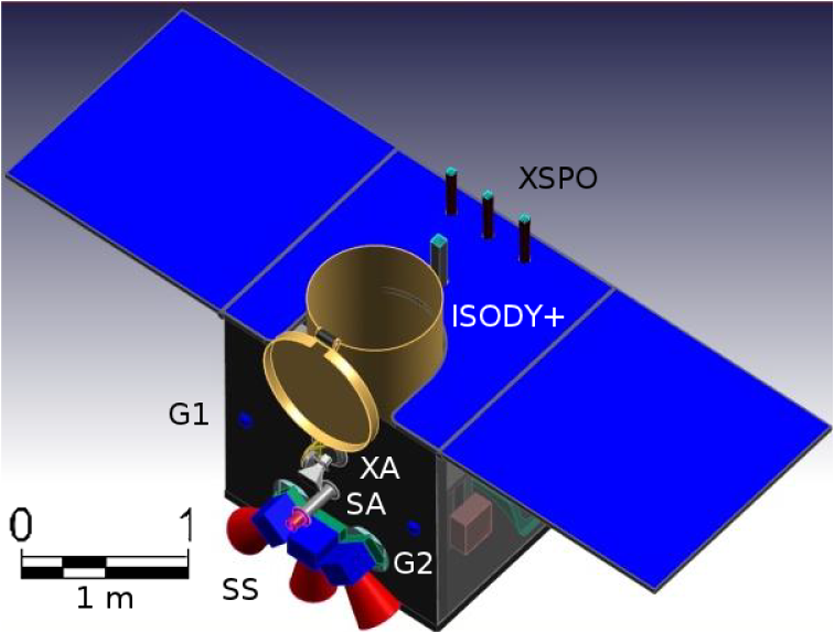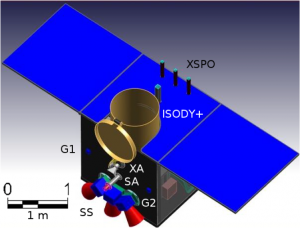
ADAHELI+ :ADvanced Astronomy for HELIophysics Plus
We present a study performed to address the ESA call for a small mission and to propose a small budget solar observatory: ADAHELI+ (ADvanced Astronomy  for HELIophysics Plus).
for HELIophysics Plus).
Waiting at the centre of the Solar System, the Sun is offering us a unique opportunity to understand physical processes at work everywhere in the Universe. In the last decades, our understanding of the Cosmos has been enormously expanded thanks to the new possibilities granted by the Space-age and Information-age technology. Exploiting the new tools provided by the Big Data-age to study our own star can foster those breakthroughs.
ADAHELI+ will be the first and only solar space telescope specifically designed for hi-res multi-line spectropolarimetric imaging, either with high cadence or exceptionally extended observations of a target solar region.
In addition, it will be equipped with an X-ray imaging sensor, capable of measuring the polarization state at these very short wavelengths.
The ADAHELI+ mission can shed new light on these key topics and will address the long sought after questions:
1. What determines the Sun’s Corona temperature?
– How does the magnetic field couple with the solar atmosphere from the lower photosphere to the upper chromosphere?
– What is the role of waves in coronal heating?
2. How is the magnetic field generated and destroyed on timescales ranging from fractions of a second to years?
– How does the magnetic field interact with the dense plasma at the bottom of the photosphere, in particular in the polar regions?
3. How is the fast solar wind generated and accelerated?
– What is the polarization state of the light emitted by hard X-ray (HXR) sources in the solar atmosphere?
The mission is conceived as an innovative and very focused Space Observatory for Near Infrared (NIR) multi-line spectropolarimetric imaging, coupled with an ancillary solar flares X-ray polarimeter. The mission time-frame is set in the expected descending phase of the solar cycle 24, to allow the study of both the active (flares, MHD waves in magnetic environments,…) and the quiet (convection, other waves,…) Sun.
ADAHELI+ will open a new and wide window to the investigation and understanding of processes in the Sun’s plasma and magnetic field thanks to:
1.high resolution and high cadence NIR multiline imaging
2.X-ray polarimetry
3.extremely long-term observations
4.high telemetry
More at: http://spie.org/Publications/Journal/10.1117/1.JATIS.1.4.044006




More Stories
Stage a Tor Vergata: Summer 2019
A night at the University.
ESCAPE Project Press Release